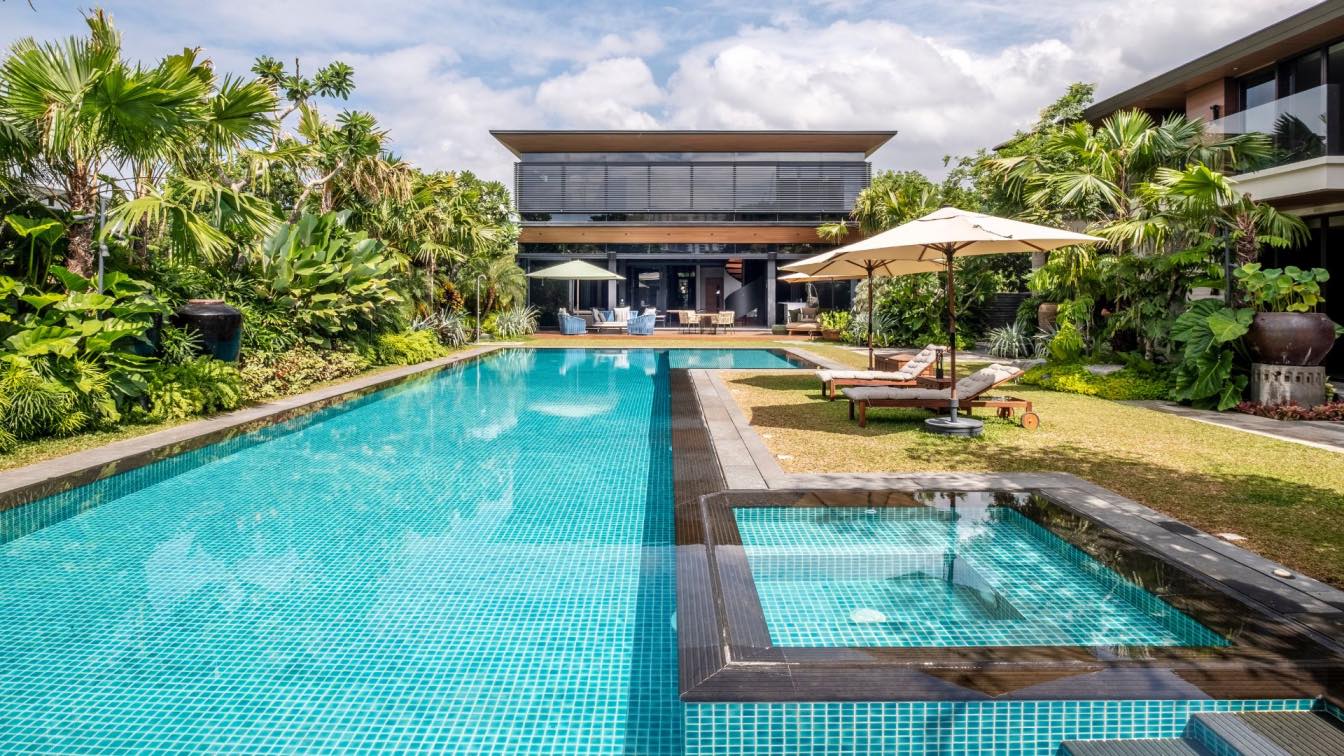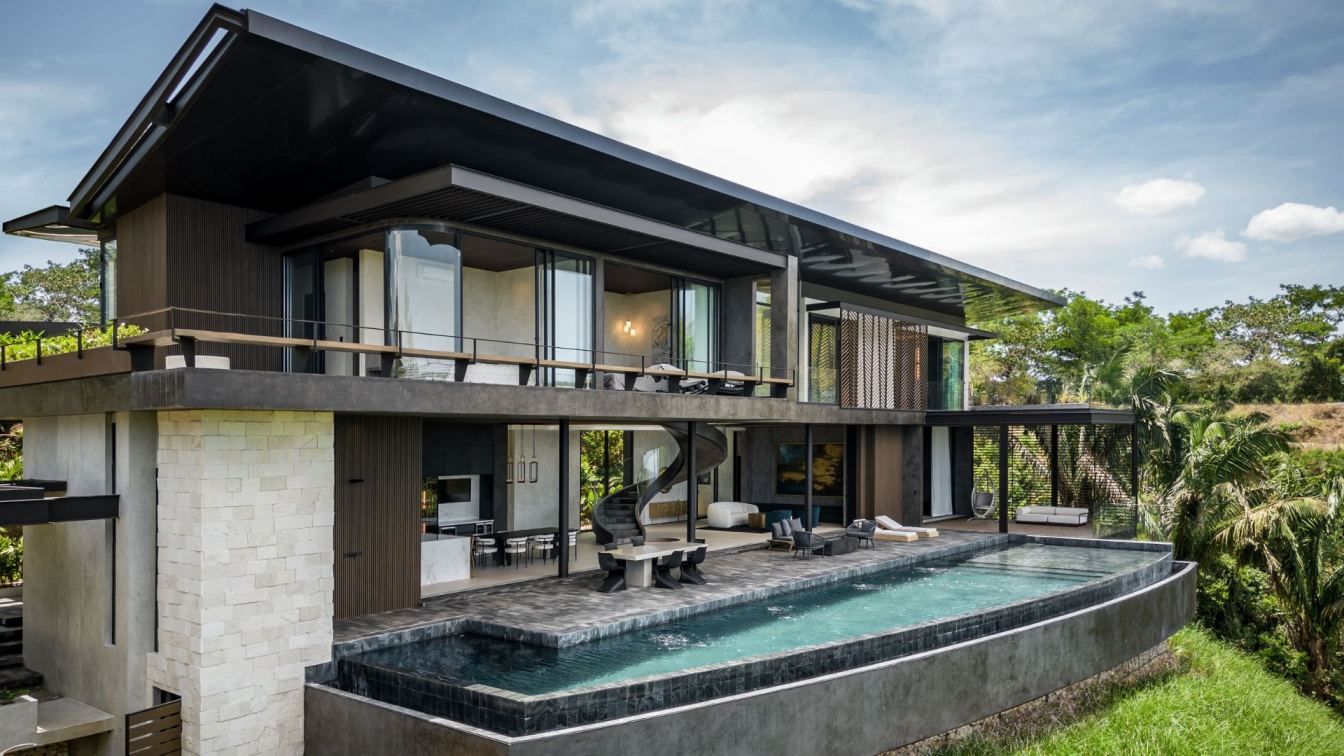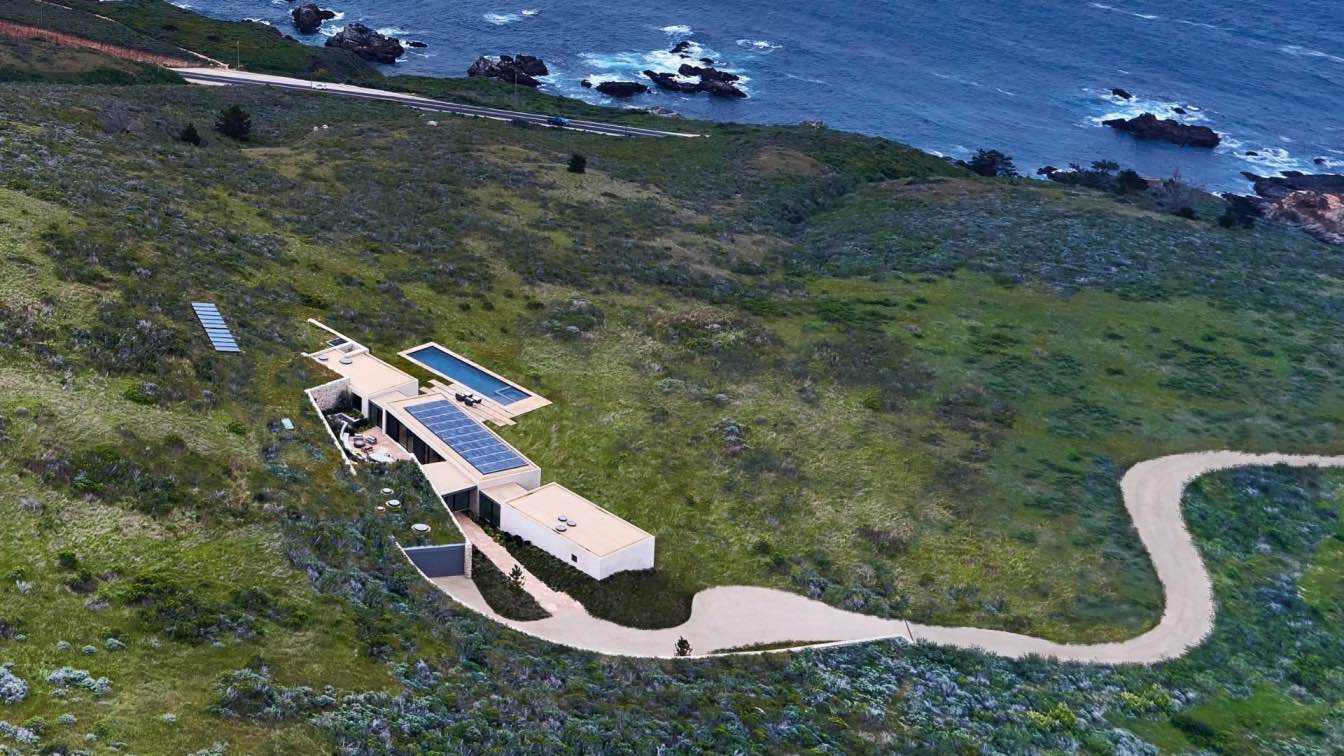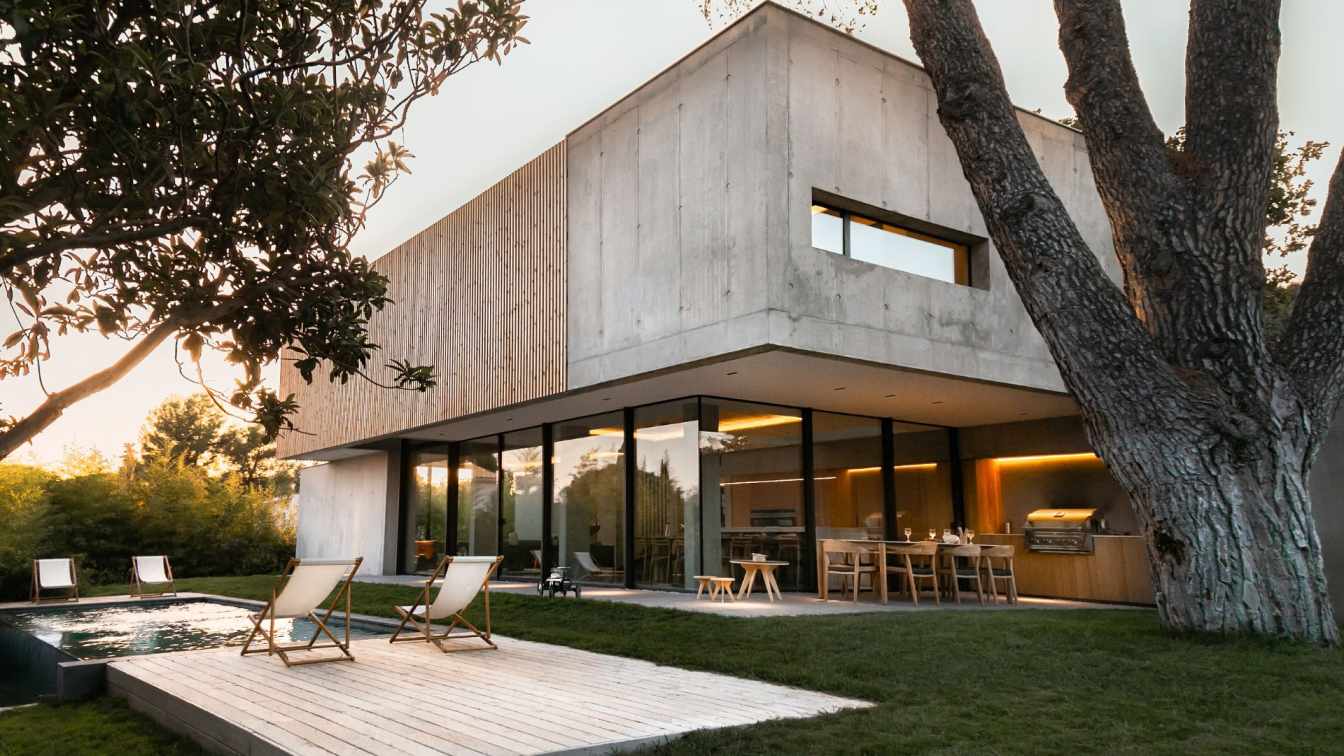Buensalido + Architects: The house is organized by a central axis that runs the entire depth of the property, starting from the entry foyer and terminating thru a series of sequential experiences with the main living area, the outdoor deck, and ultimately at the landscaped garden and pool. Translated as a covered exterior walkway, this central ‘avenue’ becomes the organizational component of the plan, from which volumes jut out on both sides containing spaces of various functions. On the south side are service spaces and on the northern side are served spaces, with each volume separated and punctured by outdoor areas that afford all spaces with cross-ventilation and an abundance of natural light. A consequence of this, combined with the generous heights of each space, is a general feeling of lightness and airiness or what we locally know as ‘maaliwalas’. This is a character that must be present in tropical architecture.
The massing of the architecture is simply an expression of its internal functions, where private spaces are enclosed with solid planes, and the less private spaces are considered as voids, enclosed with transparent planes that function as fenestrations and opportunities for light and air. To mitigate the tropical heat, the ‘screen’ was employed as a secondary layer that also provides a sense of security and privacy.
Architecture becomes a Screen, Screen as a Transitional Strategy, and the Transitional Strategy becomes Language.
The Screen, therefore, becomes a dichotomous essay between the natural and artificial, between outside and inside, between transparency and opacity, and between openness and privacy.























































































About
Jason Buensalido is the Principal Architect and Chief Design Ambassador of Buensalido Architects, a design firm that is committed to introduce fresh, bold, and innovative concepts to the Philippine design setting.
Along with his team, he bears the torch in contemporizing Filipino architecture and the local design scene with the goal to bring the nation global, by staying true to our identity. His company veers away from the conventional and common, infuses function and innovation in all its creations, ultimately breathing new life into traditional design models and methods. It challenges and stretches the possibilities of design context in the Philippines.
He is an alumnus of the University of Santo Tomas College of Architecture, as well as the Architectural Association Global School. He placed first in the Architectural Board Examination in 2005. Architect Buensalido also graduated as a Gold Medal Awardee for the Ateneo Graduate School of Business in 2014, is a Certified User Experience Practicioner by the British Computer Society, and was conferred as an ASEAN Architect in 2019.
Aside from his day-to-day projects, his firm has garnered several awards in multiple national and international competitions, such as Nayong Pilipino Cultural Park (Nayong Pilipino Foundation, 2002), Cultural Center of the Philippines Masterplan (CCP and NCCA, 2005) , Millenium Schools (DepEd, 2008), Pinakamagandang Bahay Sa Balat Ng Lupa (U.P. and La Farge, 2008), and a shortlist for the Design of the Artists Center and the Performing Arts Center for the Cultural Center of the Philippines in 2010.
In 2014, he wrote and published a book called ‘Random Responses : A Crusade To Contemporize Philippine Architecture’, a compendium of the firm’s past, future, built, unbuilt, small, and large scale projects, which is also his and Buensalido Architects’ “love letter” for Philippine architecture, which the firm believes still holds great relevance amidst the thematic, foreign, and non-contextual architectural styles in vogue in the country today.
He has also recently used this understanding of design and space into visual art and sculpture, often exploring parametric patterns and phenomena of nature. He translates these into sculptural abstract forms that communicate the same essence of these phenomena, often extracting clues, learning, and questions from them, on how humanity can attain a sustainable existence.
In 2018, Buensalido+Architects was recognized as one of the T&C Design 50: Manila’s Top Architects and Interior Designers by Town and Country Magazine; and has recently received the most nominations for multiple categories under the Kohler Bold Design Awards, while winning the award for the Culture Category thru APT Studios, a TV Studio in Marikina. They also won the grand prize for the M.A.D.E. (Metrobank Arts and Design Excellence) Awards for Commercial category for The Terraces at Dao, an company headquarters of a lighting equipment rentals business that sparkplugged the upliftment of the immediate community. Both awards were chosen among numerous submissions of design firms from all over the country, a sign that Philippine Architecture is yearning for a new direction towards positive change.
In 2019, he was included in the Generation T List 2019, an annual media platform organized by Asia Tatler and Philippine Tatler that connects, educates and recognizes young leaders shaping Asia’s future.
In 2020, Buensalido+Architects was recognized as one of the The Best Architects in the Philippines by Esquire Philippines.
In 2021, his firm had seven projects - the most projects to be nominated for the People’s Choice Awards for the Haligi Ng Dangal Awards organized by the National Comission for Culture and the Arts, reinforcing the relevance of their work in finding contemporary ways to showcase the Filipino Identity in Architecture.
In the same year, two of his projects got shortlisted in the World Architecture Festival - The Freedom Memorial for Futures Category - Competition, and The Interweave for Built Category - Schools and in the Best Use of Color Category. The Interweave received a ‘Highly Commended’ citation for both categories.





